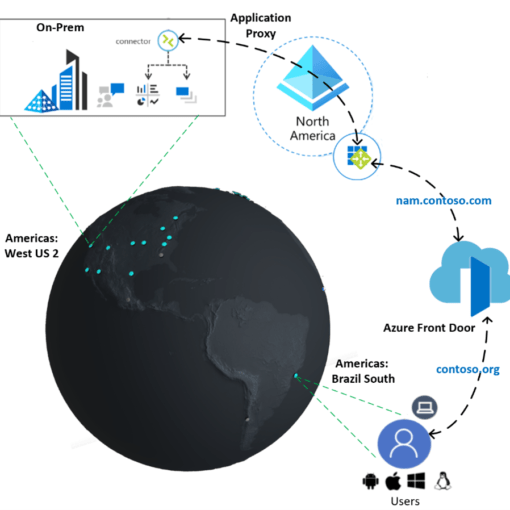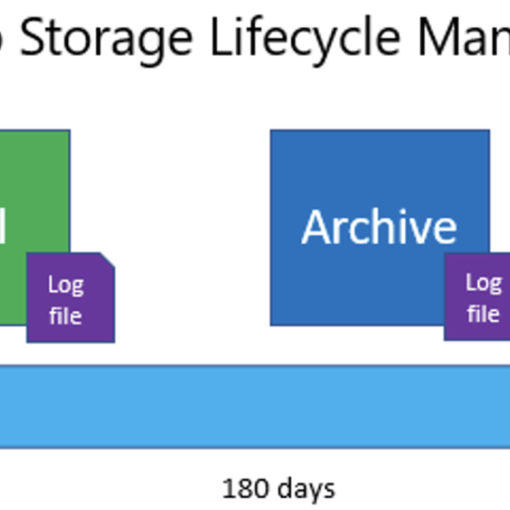
In the realm of cloud computing, network security is paramount. Microsoft Azure offers a plethora of tools and features designed to protect your network infrastructure and ensure the secure transmission of data. This comprehensive guide will explore Azure’s network security capabilities, providing insights on how to safeguard your cloud environment effectively.
Why Network Security is Essential
- Data Protection: Preventing unauthorised access and ensuring data integrity.
- Compliance: Meeting regulatory requirements such as GDPR, HIPAA, and CCPA.
- Operational Continuity: Ensuring reliable and uninterrupted access to services.
Key Components of Azure Network Security
- Azure Virtual Network (VNet)
- Network Security Groups (NSGs)
- Azure Firewall
- Azure DDoS Protection
- Azure Bastion
- Private Link and Private Endpoints
- Service Endpoints
- Azure VPN Gateway and ExpressRoute
- Application Gateway and Web Application Firewall (WAF)
- Azure Security Center
Let’s dive into each component and explore how they contribute to a robust network security posture.
1. Azure Virtual Network (VNet)
An Azure Virtual Network (VNet) is the foundation of your Azure network. It enables you to create isolated network segments within Azure, providing a secure environment for your resources. Key Features:
- Isolation: Segregate your resources into isolated networks.
- Custom IP Addressing: Define custom IP address ranges.
- Subnets: Segment your VNet into subnets for better organisation and security.
- Routing: Control traffic flow with custom route tables.
For instance a financial institution can create separate VNets for development, testing, and production environments, ensuring isolation and reducing the risk of data leaks between environments.
2. Network Security Groups (NSGs)
Network Security Groups (NSGs) are critical for controlling inbound and outbound traffic to your Azure resources. They act as virtual firewalls, allowing you to define security rules based on IP addresses, ports, and protocols. Key Features:
- Inbound and Outbound Rules: Control traffic flow with custom rules.
- Stateful Inspection: Automatically allows return traffic.
- Granular Control: Apply NSGs at both subnet and NIC levels.
For example, an e-commerce platform can use NSGs to restrict access to their web servers, only allowing traffic from specific IP ranges while blocking all other traffic.
3. Azure Firewall
Azure Firewall is a managed, cloud-based network security service that protects your Azure Virtual Network resources. It offers comprehensive security features, including threat intelligence, URL filtering, and application rules. Key Features:
- Threat Intelligence: Leverage Microsoft threat intelligence to block malicious traffic.
- Application Rules: Control outbound traffic based on fully qualified domain names (FQDNs).
- Network Rules: Define rules based on source/destination IP, port, and protocol.
As a use case, a global enterprise can use Azure Firewall to enforce corporate security policies across multiple VNets, ensuring consistent security practices worldwide.
4. Azure DDoS Protection
Azure DDoS Protection safeguards your applications from Distributed Denial of Service (DDoS) attacks. It provides automatic detection and mitigation of attacks, ensuring high availability and performance. Key Features:
- Automatic Attack Mitigation: Detects and mitigates DDoS attacks in real-time.
- Integration with Azure Monitor: Provides detailed attack metrics and diagnostics.
- Protection Plans: Offers both Basic and Standard plans to suit different needs.
For instance, a popular social media platform can use Azure DDoS Protection to prevent downtime and service disruptions during high-traffic events or targeted attacks.
5. Azure Bastion
Azure Bastion provides secure and seamless RDP and SSH connectivity to your virtual machines directly from the Azure portal. It eliminates the need for public IP addresses, reducing the attack surface. Key Features:
- Secure Access: Access VMs without exposing them to the internet.
- Platform Managed: Managed by Azure, reducing the operational burden.
- Single Sign-On: Integrates with Azure AD for streamlined access.
An obvious use case would be a software development team can use Azure Bastion to securely manage virtual machines in a development VNet without exposing any VMs to the public internet.
6. Private Link and Private Endpoints
Azure Private Link and Private Endpoints enable secure access to Azure services over a private IP within your virtual network. This ensures that traffic between your VNet and the Azure service remains on the Microsoft backbone network. Key Features:
- Private IP Addressing: Access Azure services using private IPs.
- Enhanced Security: Eliminates exposure to the public internet.
- VNet Integration: Seamlessly integrates with your virtual network.
As an example of a healthcare organisation can use Private Endpoints to securely connect to Azure SQL Database, ensuring patient data remains within a private network and complies with HIPAA regulations.
7. Service Endpoints
Azure Service Endpoints extend your virtual network’s private address space and identity to the Azure service, allowing secure access over the Azure backbone network. Key Features:
- Secure Access: Restrict access to specific VNets and subnets.
- Simplified Connectivity: No need for additional private IP management.
- Improved Performance: Leverages Azure backbone for high throughput.
For example, a large corporation can use Service Endpoints to securely access Azure Storage accounts, ensuring that data transfer remains within the Azure network and is protected from external threats.
8. Azure VPN Gateway and ExpressRoute
Azure VPN Gateway and ExpressRoute provide secure, reliable connectivity between your on-premises network and Azure.
VPN Gateway:
- Site-to-Site VPN: Establish secure connections between on-premises networks and Azure.
- Point-to-Site VPN: Securely connect individual clients to your Azure network.
ExpressRoute:
- Private Connectivity: Provides private connections to Azure through a third-party connectivity provider.
- High Performance: Offers higher reliability, speed, and security compared to typical internet connections.
9. Application Gateway and Web Application Firewall (WAF)
Azure Application Gateway is a web traffic load balancer that enables you to manage traffic to your web applications. It includes a Web Application Firewall (WAF) to protect against common web vulnerabilities. Key Features:
- Load Balancing: Distributes traffic across multiple servers.
- SSL Termination: Offloads SSL decryption to the gateway.
- Web Application Firewall: Protects against SQL injection, cross-site scripting, and other common attacks.
For example, an online retail business can use Application Gateway with WAF to balance traffic across multiple web servers, ensuring high availability and protecting against web-based attacks.
10. Azure Security Center
Azure Security Center provides a unified view of your Azure resources’ security posture. It offers advanced threat protection across your hybrid workloads in Azure, on-premises, and other clouds. Key Features:
- Security Posture Management: Continuously assesses the security state of your resources.
- Advanced Threat Protection: Detects and responds to threats with built-in machine learning.
- Compliance Monitoring: Tracks compliance with regulatory requirements.
For instance, a government agency can use Azure Security Center to monitor the security posture of its hybrid cloud environment, ensuring compliance with stringent government regulations and protecting sensitive data.
Azure’s comprehensive suite of network security tools provides the flexibility and control needed to secure your cloud environment. By leveraging these tools, you can ensure that your data is protected, comply with regulatory requirements, and maintain operational continuity.
Securing your Azure network is not a one-time task but an ongoing process. Regularly review and update your security configurations to adapt to evolving threats and ensure that your data remains secure.
Sources:
- Microsoft Azure Documentation: Azure Network Security
- Azure Security Center: Introduction to Azure Security Center
- Azure Networking: Azure Virtual Network Overview




